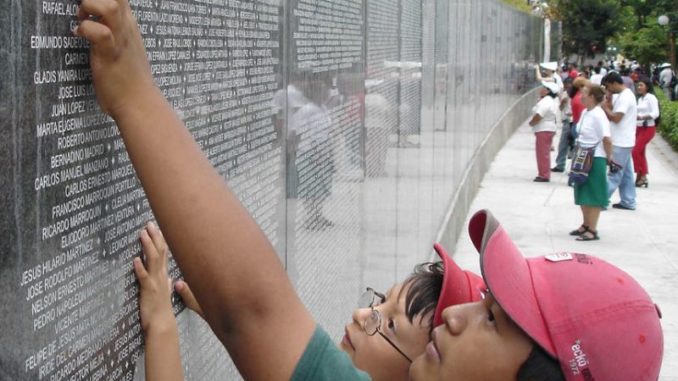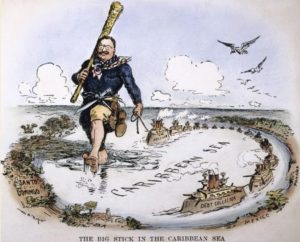
Truth may be the first casualty of war, but it never dies. Truth can be revived. Lies and deceptions need not stand for an eternity. The U.S. Foreign Policy History & Resource Guide website – alias “peace history” – is dedicated to telling the truth, methodically unpacking unspoken assumptions, deceptions, and “fake news” about U.S. wars and foreign policies as well as examining the tragic results.
The cavalcade of lies accompanying the Cold War produced not only the Vietnam War and the My Lai massacre, but also U.S. support for repression and terrorism in Central America during the 1980s. On December 11, 1981, the U.S.-trained Atlacatl Battalion of El Salvador conducted a systematic massacre of nearly 1,000 civilians at El Mozote and surrounding hamlets, almost twice the number of victims as My Lai. The Salvadoran and U.S. governments jointly blocked any investigation of the massacre for ten years, and no one was ever held accountable.
The most recent website essay, “Central America wars, 1980s,” places the Reagan administration’s Central America policies and justifications in historical perspective, provides historical background on El Salvador, Guatemala, and Nicaragua, and describes the tragic wars of the 1980s. A separate section discusses the resilient Central America movement that opposed Reagan’s policies and fostered a remarkable number of transnational activities in the interest of cultivating understanding and empathy across national borders. Authored by Ginger Williams (Winthrop Univ.), Jeremy Kuzmarov (Univ. of Tulsa), and myself, with assistance from Richard Grossman (Northeastern Illinois Univ.), Brian D’Haeseleer (Lyon Univ.), and Michael Schmidli (Bucknell Univ.), the essay contains about 80 pages of text, is divided into numerous subsections for easy assimilation, and includes 103 photographs and images.
The U.S. Foreign Policy History & Resource Guide was launched in October 2015, its goal being to provide a principled perspective on U.S. foreign policies for the general public and students. The website is sponsored by the Historians for Peace and Democracy and the Peace History Society. It is an open public resource and instructors may use it to enhance their curricula. Seven of sixteen planned entries have been completed thus far.

Previous to the “Central America wars, 1980s,” an essay of similar length was completed in January 2018: “’Yankee imperialism,’ 1901-1934,” authored by myself with assistance from Ann Jefferson (Univ. of Tennessee) and Marc Becker (Truman State Univ.). The essay critically examines U.S. motives and rationales for interventionism, reviews the policies of succeeding U.S. administrations, and delves into six case studies of U.S. interventions – in Cuba, Panama, Mexico, Haiti, Dominican Republic, and Nicaragua. Also discussed is the eclectic anti-interventionist movement that gathered force after World War I and helped turn the tide of public opinion against U.S. military occupations in Haiti, the Dominican Republic, and Nicaragua, and successfully campaigned against war with Mexico in the mid-1920s.
The next essay will focus on World War I. Chuck Howlett, co-author of Antiwar Dissent and Peace Activism in World War I America (Univ. of Nebraska Press, 2014), and Jeremy Kuzmarov, co-author of The Russians Are Coming Again (Monthly Review Press, May 2018), are part of the writing team. For those who have expertise in an area not yet covered (see website home page) and would like to help with the planning, writing, or reviewing of future essays, please send me a note.
– Roger Peace (rcpeace3@embarqmail.com)